Ask yourself this question. Twenty years ago, if you were to get behind the wheel of a vehicle that weighed 5,500 lbs, carried the ability to traverse over mud, fallen trees and small rivers, and then proceeded to travel up to 130 mph on the freeway, would you be scared? Unless you’re a member of the Knievel dynasty, more than likely your answer would be “yes, very much so.” Now, fast forward the same situation to today and reevaluate your response because speed, off-road ability and confidence can exist in harmony. Oddly enough, that fine balance doesn’t have to come out of the aftermarket either as it can be purchased right off a showroom floor. The only thing a person has to do is go down to their friendly neighborhood Land Rover dealership and secure the keys to a 2012 Range Rover Sport.

Perhaps more confusing than trying to figure out which Porsche 911 is which, Land Rover has played the name game heavy to create the Range Rover Sport. If one was to simply assume, the Sport would be a high-performance version of the English company’s flagship SUV, the Range Rover. In actuality, the truck is its own separate entity that has more in common with the shorter and taller Discovery than the vehicle it shares its namesake with. Because of that, the Sport sits at 70.4 inches tall, 188 inches long and 78.8 inches wide; 3.5, 8 and 1.3 inches smaller respectively than the standard Range Rover. Why Land Rover would do such a thing is a bit strange, but they have their reasons and since 2005, the Sport has been rolling around the globe without any intent of stopping. The UK legend, which is now owned by Indian Tata Motors, more than likely put the vehicle into this world to widen their buyer market as the Sport is not only more parking lot friendly, its much more welcoming towards consumer’s wallets.


Given the Range Rover Sport’s size, performance and luxury quota, it has a heavy amount of rivals to compete with. Vehicles such as the Porsche Cayenne, BMW X5 and X6, Mercedes-Benz GL-Class, and even the last two premium SUVs we tested – the Infiniti QX56 and Lexus LX570 – are all considered challengers. The Germans carry price tags between $70,000 and $100-some-thousand while the Japanese can go for similar MSRPs. This would make one think that the English truck would fetch similar kinds of dough but oddly enough, our tester managed to undercut the others by several thousands of dollars. The reason: what’s under the hood. Unlike the last Sport we tested – a 2011 – our 2012 featured the base, non-supercharged engine. Starting MSRP for the base Range Rover Sport is a surprising $60,045: $15 grand less than the supercharged variant. For that money, a buyer gets standard features such as rain sensing windshield wipers, Xenon headlamps, dual-zone climate control, powered tailgate, GPS navigation with a seven-inch touchscreen, bluetooth device pairing and voice activation. Our tester, dressed in an un-surprising Siberian Silver suit, came with $350 worth of wood trim, a $1,650 Premium Audio Package (825 watt Logic7 stereo with satellite radio), and a $4,700 Luxury Interior Package (heated front/rear seats and steering wheel, cooler box and contrast stitching). With destination charge, our tester carried a final MSRP of $67,595 or, $20,000 less than the Lexus LX570 we drove earlier.




Like its competition, the Range Rover Sport has its own allure to try and make it special from everything else. That “something” can first be seen on the outside as the SUV does a fantastic job of being tough and sporty at the same time. At a glance, it may look eerily similar to the standard Range Rover, but the Sport appears lower, wider and much more tout than its actually larger brother. In profile view, the slight rake to the roof blends perfectly to the sloped back glass while the muscular fender flares and lowered bumpers give off the sense of apex-carving abilities. Our only aside are the base model’s multi-spoke wheels which are not as handsome as the Supercharged’s larger five spokes. Other than that, the Range Rover Sport might just be one of the – if not the – best looking premium SUVs on the market. The Lexus sometimes looks too bulky, the Infiniti too busy and the Porsche too bulbous. The only thing that might come close to the Sport in looks is the U.S.’s heavy hitter known as the Cadillac Escalade. In the aesthetics department, the question becomes, which is more endearing: English charm or American pizzazz?

Inside the Sport is where charm starts to turn into business. While real wood and excellent heated seats greet passengers, they come at an added cost. These little things should be standard in a vehicle of this magnitude, but that isn’t the case. Despite that, the Range Rover Sport is still well-appointed and no one would call it “lacking in luxury”. Like the last Sport we tested, the 2012 features stadium-style seating for the rear occupants: a rarity in the segment. Outward visibility is excellent and while behind the wheel, there was never a feeling of being “too big”. On the surface, things seem fine but when you begin to dig a little deeper, thoughts can begin to change. The Range Rover Sport features technologies used by other Tata owned English machines and like the sedans it shares so much with, our tester’s media controller could use a refresh. In that case, the Japanese and American rivals best the Sport’s navigation which is slower to respond than wanted out of a near $70,000 luxury vehicle.





Sometimes, interior gizmos aren’t everything as if you were to try to follow a Range Rover Sport on a twisty road in a Cadillac Escalade or Lexus LX570, your next phone call would more than likely be to a tow truck service. Land Rovers of today are known for their suspension technologies and the Sport is no exception. Between the fenders and the wheels is a fully independent set-up with Electronic Air dampers with automatic load leveling. Named DampTronic, the system monitors pressure and has the ability to react accordingly up 500 times per second. Similar to the set-up found on the Infiniti QX56, the Range Rover seems to benefit more so, mainly due to its shorter wheelbase and lower curb weight. The truck’s steering feel is excellent: perhaps best in its segment while the SUV’s ride quality stays the same no matter what it’s driving on. Even when taken off the highway and placed on some seriously rutted utility roads, the Range Rover Sport managed to be as smooth as when the streets were just paved. The engineers at Land Rover can be to blame as their Terrain Response System comes standard. Mitigated by a easy-to-reach knob on the center console, the system adjusts ride height, damping force, torque delivery, throttle response and traction control depending on which mode is selected. Any type of situation from the freeway to crawling rocks can be picked and each change-up goes unannounced. Everything comes together to make a fantastic off-road vehicle that can match wits with the mud-slinging giant from Lexus. But unlike the more expensive Japanese offering, the driver engages off-road mode in a much more modern and sophisticated manner while behind the wheel of the Range Rover.

To go along with the Sport’s innovative suspension, its drivetrain seems to have been pulled from the Detroit of 40 years ago. Forget coughing and sputtering carburetors and think throttle response, torque and noise. Under the sculpted hood is a true, United Kingdom master piece that displaces 5.0 liters and uses dual overhead camshafts. Assembled in the UK, the third generation of the AJ V8 features direct injection, variable valve timing and an all-alloy construction. Similar to the Jaguar XJL we drove last year, the beefy eight pumps out 375 horsepower and 375 lb-ft of torque in our tester’s non-supercharged form. It may lack 135 ponies compared to our 2011 test Sport, but the base SUV is by no means slow. Standing acceleration surges with force usually reserved for performance cars and is accompanied by a snarl and growl unmatched by anything from Japan. The transmission may be a few-years-old six speed ZF unit, but the slushbox is still smooth and responsive. Even in slower, naturally aspirated form, the Range Rover Sport is truly muscle car worthy; so much so that we were often flabbergasted by its actual size and weight.


We will be the first to admit; there are far too many choices in the large, premium SUV segment to pick an honest winner. Each and every offering has its special traits and talents and none of them weigh enough to stand higher than the rest. Some are prettier than others, some are faster, some are more luxurious and some are packed with so much technology that they probably move around while you’re sleeping. In order to find one that best suits your needs and more importantly, your soul, some countless hours of research will have to be done. Even still, we can say this: do not ignore the Range Rover Sport. For some reason, Land Rover isn’t asking an arm and a leg for one, even if its fitted with the concrete wrinkling supercharged engine. When most would assume a triple-digit-thousand-dollar price tag, our Sport’s as tested $67 grand MSRP undercuts so much of its competition it’s almost unreal. For that reasonable price, a buyer isn’t left wanting the more expensive, forced air version either as the base is plenty fast, just as comfortable and more efficient to boot. It may not be as exciting and easy to use on the inside and despite its new-found ownership glory, all Land Rover products won’t be as reliable in the eyes of consumers than anything from Japan, Germany or America, but it still has plenty of “ups”. If the driving experience to value factor is most important to you, than look no further than the 2012 Range Rover Sport.
Photos: © Copyright 2012 Ossamah Shabbir

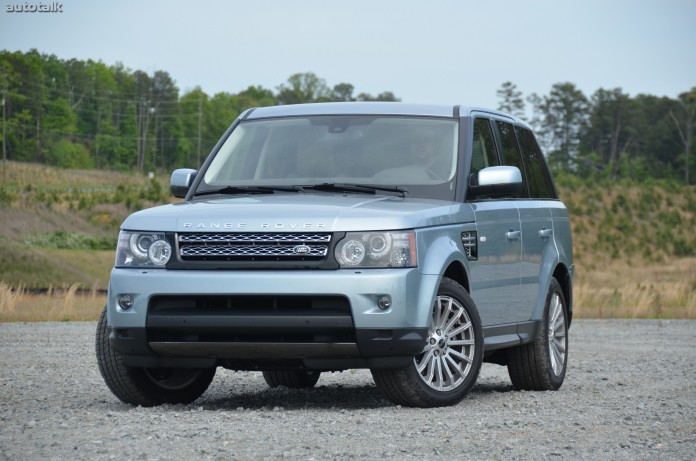

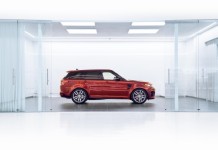
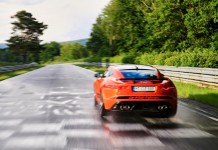
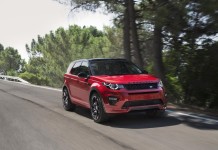

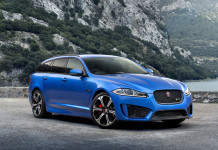
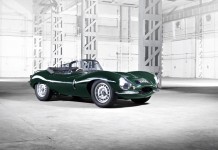


[…] 2012 Range Rover Sport Review […]